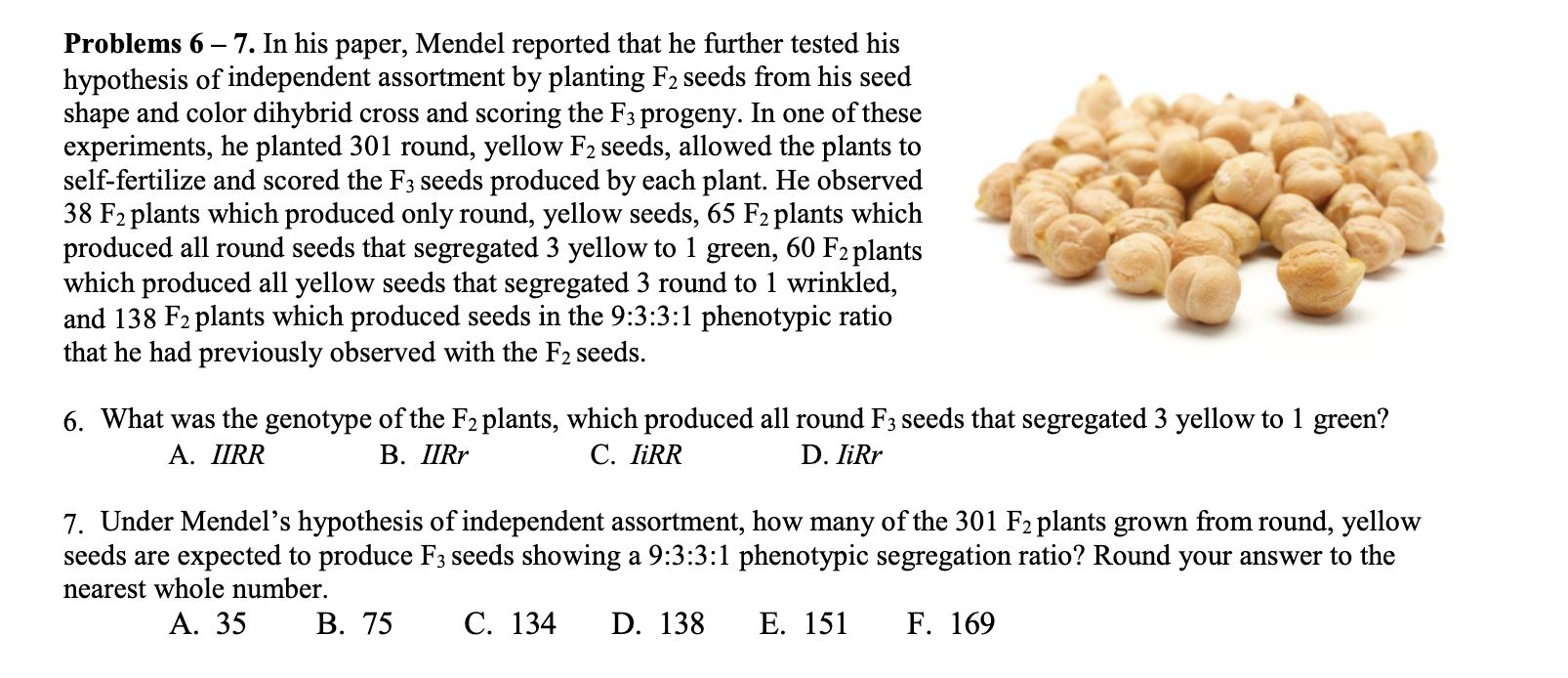Home /
Expert Answers /
Biology /
problems-6-7-in-his-paper-mendel-reported-that-he-further-tested-his-hypothesis-of-independent-pa337
(Solved): Problems 6 - 7. In his paper, Mendel reported that he further tested his hypothesis of independent ...
Problems 6 - 7. In his paper, Mendel reported that he further tested his hypothesis of independent assortment by planting \( F_{2} \) seeds from his seed shape and color dihybrid cross and scoring the \( \mathrm{F}_{3} \) progeny. In one of these experiments, he planted 301 round, yellow \( F_{2} \) seeds, allowed the plants to self-fertilize and scored the \( F_{3} \) seeds produced by each plant. He observed \( 38 \mathrm{~F}_{2} \) plants which produced only round, yellow seeds, \( 65 \mathrm{~F}_{2} \) plants which produced all round seeds that segregated 3 yellow to 1 green, \( 60 \mathrm{~F}_{2} \) plants which produced all yellow seeds that segregated 3 round to 1 wrinkled, and \( 138 \mathrm{~F}_{2} \) plants which produced seeds in the 9:3:3:1 phenotypic ratio that he had previously observed with the \( F_{2} \) seeds. 6. What was the genotype of the \( F_{2} \) plants, which produced all round \( F_{3} \) seeds that segregated 3 yellow to 1 green? A. IIRR B. \( I I R r \) C. IiRR D. \( \operatorname{IiRr} \) 7. Under Mendel's hypothesis of independent assortment, how many of the \( 301 \mathrm{~F}_{2} \) plants grown from round, yellow seeds are expected to produce \( F_{3} \) seeds showing a 9:3:3:1 phenotypic segregation ratio? Round your answer to the nearest whole number. A. 35 B. 75 C. 134 D. 138 E. 151 F. 169
Expert Answer
B. IRr Explanation: The genotype of the F2 plants that produced all round F3 seeds that segregated 3 yellow to 1 green is B. IRr. F. 169. explanation:
